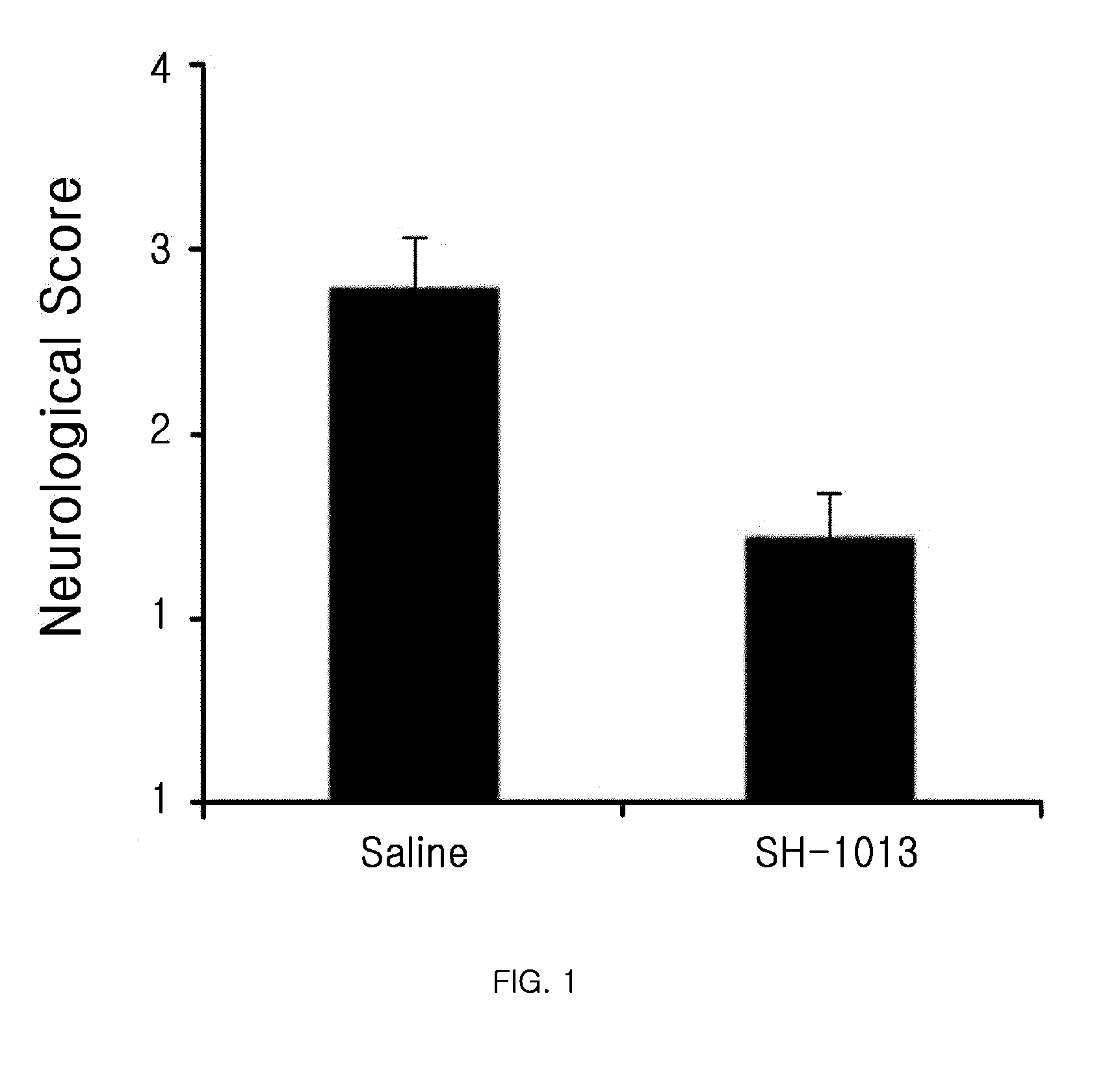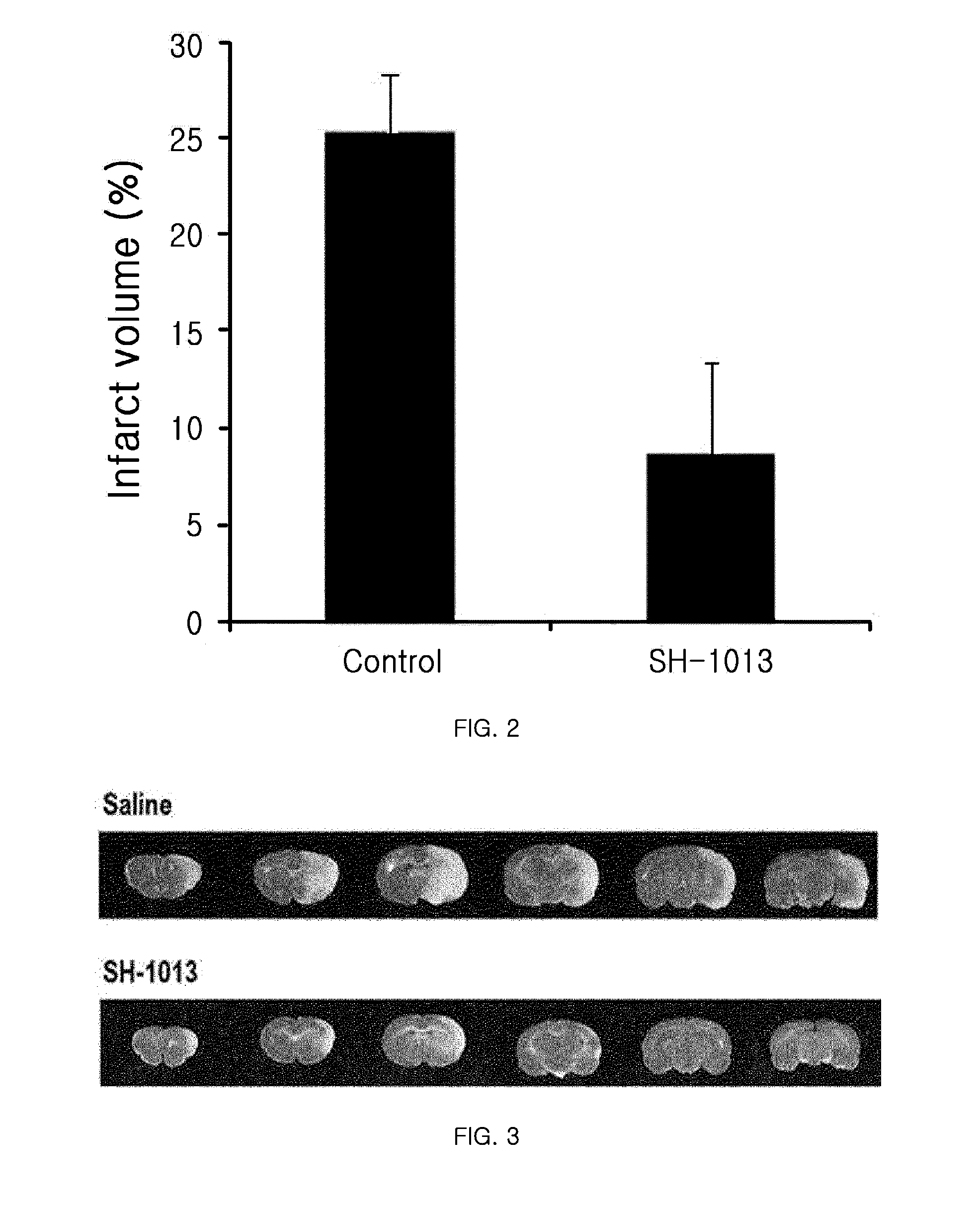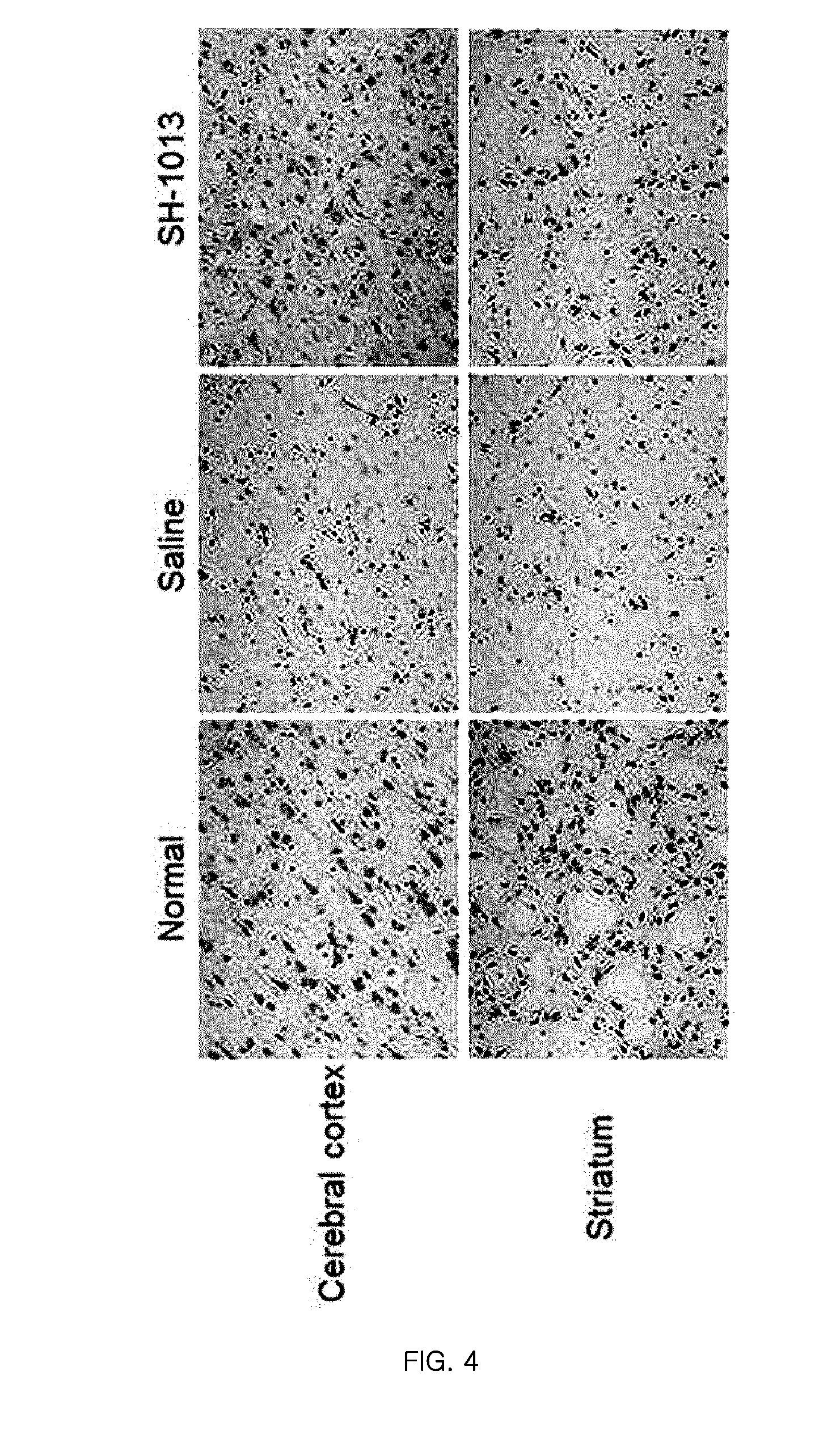Pharmaceutical Composition or Health Food Comprising Lonicera Coerulea Var. Edulis Fruit Extracts as Active Ingredients for Preventing or Improving Ischemic Cerebrovascular Diseases
a technology of lonicera coerulea and fruit extract, which is applied in the direction of drug compositions, biocide, plant/algae/fungi/lichens ingredients, etc., can solve the problems of severe aftereffects, disturbance of movement and sensation, and impairment of all body functions, so as to prevent or improve ischemic cerebrovascular disease
- Summary
- Abstract
- Description
- Claims
- Application Information
AI Technical Summary
Benefits of technology
Problems solved by technology
Method used
Image
Examples
example 1
Preparation of Fruit Extract of Lonicera caerulea L. var. edulis
[0074] Hot Water Extraction Using Water Solvent
[0075]Fruits of the wild Lonicera caerulea L. var. edulis personally harvested in Yanbian, China and Baekdu Mountain were dried and used in the preparation of a fruit extract of Lonicera caerulea L. var. edulis. 100 g of Lonicera caerulea L. var. edulis fruit pulverized was added to 1 liter of distilled water, and stirred well, followed by reflux extraction at an extraction temperature of 90 to 95° C. for 3 hours. Then, a filtrate was separated and the herbal extract was concentrated under reduced pressure at 55˜65° C. and then freeze-dried to obtain 21.2 g of an herbal medicine powder extract.
[0076] Hot Water Extraction Using Water-Alcohol Solvent Mixture
[0077]1 liter of 25% ethyl alcohol was added to 100 g of Lonicera caerulea L. var. edulis fruit which was pulverized as in Example 1-1, and stirred well, followed by reflux extraction for 3 hours at an extraction temperat...
example 2
Preparation of Focal Ischemic Model
[0078]Sprague-Dawley (SD) rats (250-300 g) were used as an experimental animal. SD rats were fasted for 24 hours, and then anesthetized with 2.5% isoflurane using a gas mix of nitrogen and oxygen at a ratio of 7:3. The common carotid artery and the external carotid artery were ligated, a 17 mm long probe was inserted into the internal carotid artery from the bifurcation point of the internal carotid artery to occlude the base part of the middle cerebral artery for 90 minutes for induction of ischemia. During the induction of ischemia, a rectal thermometer was inserted and the temperature was monitored and maintained at a normal body temperature of 37±0.3° C. After the middle cerebral artery was occluded for a predetermined time, the probe inserted into the internal carotid artery was pulled out to perform reperfusion.
example 3
Assessment of Ischemic Brain Injury
[0079] 2,3,5-Triphenyltetrazolium chloride (TTC) Staining
[0080]To primarily observe the brain tissue injury induced by transient cerebral ischemia, TTC staining was carried out. The brain was removed from the experimental group, and 2-mm thick slices were prepared using a brain matrix and stained with 2% 2,3,5-Triphenyltetrazolium chloride (TTC) solution at 37° C. for 60 minutes. The brain slices stained with the TTC solution were fixed in a 10% neutral buffered formalin solution to measure the infarct volume (Lee et al., Glia, 50:168-181, 2005).
[0081] Histological Staining
[0082]After ischemia, the normal group and each of the experimental groups were injected intraperitonealy with chloral hydrate (400 mg / ) at a predetermined time point for general anesthesia. The chest of the experimental animal was opened, and a cannula was inserted into the ascending aorta through the left ventricle. While the animal was exsanguinated through the right ventricle...
PUM
 Login to View More
Login to View More Abstract
Description
Claims
Application Information
 Login to View More
Login to View More - R&D
- Intellectual Property
- Life Sciences
- Materials
- Tech Scout
- Unparalleled Data Quality
- Higher Quality Content
- 60% Fewer Hallucinations
Browse by: Latest US Patents, China's latest patents, Technical Efficacy Thesaurus, Application Domain, Technology Topic, Popular Technical Reports.
© 2025 PatSnap. All rights reserved.Legal|Privacy policy|Modern Slavery Act Transparency Statement|Sitemap|About US| Contact US: help@patsnap.com



